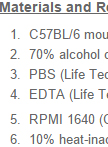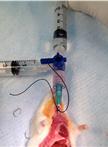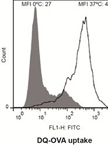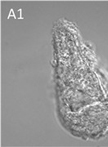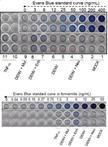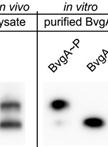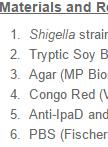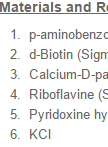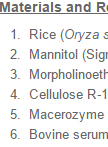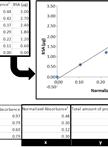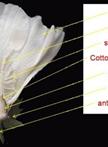往期刊物2013
卷册: 3, 期号: 22
细胞生物学
Harvest and Culture of Mouse Peritoneal Macrophages
小鼠腹水中巨噬细胞的采集和培养
免疫学
Gastric Aspiration Models
胃内容物的气管吸入模型
Assessment of Human Dendritic Cell Antigen Uptake by Flow Cytometry
采用流式细胞术评估人树突细胞的抗原摄取
Immunocytochemical Detection of Recombinant Biomphalysin on Schistosoma mansoni Sporocysts
免疫细胞化学法检测曼氏血吸虫孢囊中的重组毒素
微生物学
Assay to Evaluate Vascular Permeability Induction in Mice
小鼠血管通透性诱导的分析评估
Separation and Detection of Phosphorylated and Nonphosphorylated BvgA, a Bordetella pertussis Response Regulator, in vivo and in vitro
体内和体外分离和检测一种百日咳杆菌反应调节蛋白BvgA的磷酸化和非磷酸化形式
Shigella IpaD and IpaB Surface Localizations
志贺氏杆菌IPaD和IPAB表面定位
Transport Assays in Aspergillus nidulans
巢状曲霉转运蛋白动力学分析实验
神经科学
Cell Cycle Analysis in the Vertebrate Brain Using Immunolabeled Fresh Cell Nuclei
在脊椎动物脑部采用荧光标记新鲜细胞核进行细胞周期分析
植物科学
Analysis of RNA-protein Interactions Using Electrophoretic Mobility Shift Assay (Gel Shift Assay)
EMSA实验(凝胶迁移试验)分析RNA-蛋白质的相互作用
Bimolecular Fluorescence Complementation (BIFC) Protocol for Rice Protoplast Transformation
水稻原生质体中的(双分子荧光互补)BiFC实验
Shikimate Hydroxycinnamoyl Transferase (HCT) Activity Assays in Populus nigra
黑杨的莽草酸羟基肉桂转移酶(HCT)活性分析
Binding Assay of Cytosolic Proteins to the Cytoskeleton
胞质蛋白与细胞骨架相互作用研究
Mapping and Analysis of Illumina Reads for Transcriptome of Medicago Truncatula During the Early Organogenesis of the Nodule
早期结瘤时期的苜蓿中的转录组分析(Illumina测序)
Cotton Ovules Culture and Analysis
棉花胚珠的培养和分析


